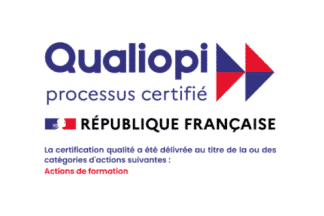What is an individual training protocol?
An individual training protocol (PIF) is an agreement between the learner, the trainer and the training organization. Note that this tripartite agreement may in some cases be quadripartite, if it is also signed off by the training manager.
It sets out all the applicable conditions and information relating to learning and teaching materials. The purpose of this document is to define the actions and responsibilities of the various training stakeholders, as well as the practical arrangements.
What are the main features of a personal training protocol?
For an agreement to be considered a PIF, it must contain the following information:
- Personal and professional goals
- Program summary
- Lesson lengths and dates
- Conditions for access to the digital training platform
- Digital methods used by the trainer
- Prerequisites and obligations governing access to the learning modules
- Assessment procedure
- Type of exams organized during the training
- Identities of the trainers, managers and other professionals supervising the lessons
- Conditions governing performance of the agreement between all signatory parties
- Summary of instructional techniques used during the learning process
- Time limits for replying to questions and queries
- Full contact details (address, email, telephone number, fax, etc.)
An agreement containing all this information may be treated as an individual training protocol.
The pros and cons of creating an individual training protocol
There is no obligation to create a PIF in order to take online training. Learners may decide not to sign a document when they begin studying. Nevertheless, since the creation and publication of the DGEFP circular in 2001, individual training protocols are recommended as they offer a number of benefits.
This multipartite agreement defines the e-learning time frame. For example, if the individual training protocol indicates that completing the lessons requires 20 hours of work, only that number of hours will be taken into account. This condition applies regardless of the time actually spent by a learner working on the lessons.
In addition, the document clearly establishes the various conditions governing the training, enabling learners to plan and organize accordingly. This visibility helps participants see the bigger picture and understand the learning challenges presented by a course.
However, learners cannot dispute the hours defined in the agreement. An employee following an e-learning course may need extra time to master the desired skills. This additional working time cannot be claimed as paid overtime. It is therefore crucial to have a clear idea of the work required and the scale of the teaching materials.
Note that this type of document cannot be considered proof of training, from a traceability perspective. Records of exercises, exams and quizzes may be necessary, to demonstrate completion of the training and obtain the corresponding certificate.
The individual training protocol can protect all aspects of a training course. However, it is essential to ensure that all the required information is present, failing which the document will not be treated as a PIF.

